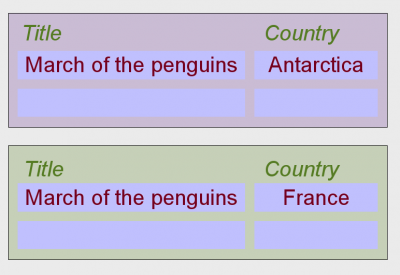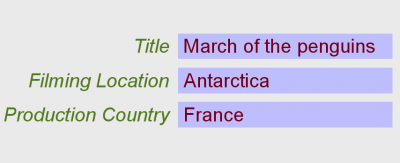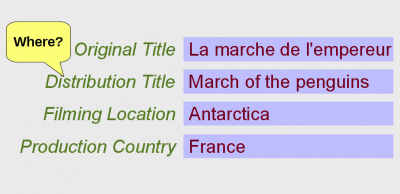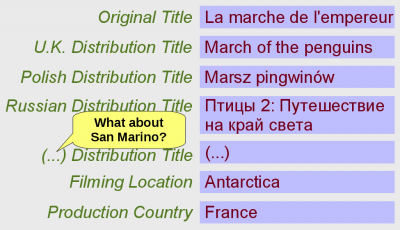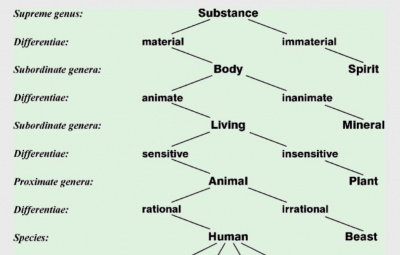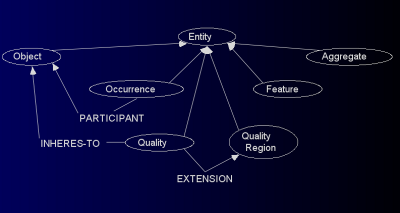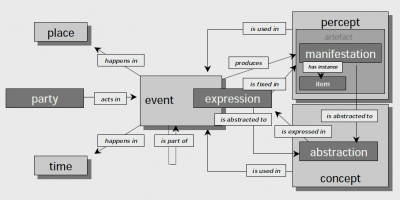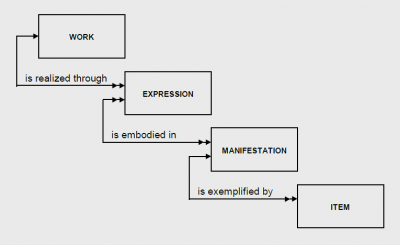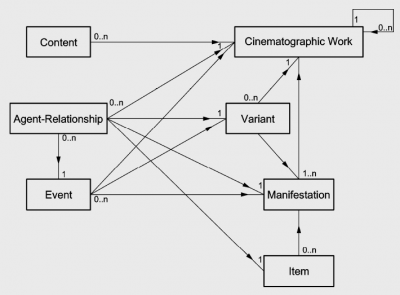Difference between revisions of "The case for reference models"
From filmstandards.org
(→Clarifying the things to talk about) |
(→Clarifying the things to talk about) |
||
| (3 intermediate revisions by the same user not shown) | |||
| Line 107: | Line 107: | ||
'''Clarifying the philosophical perspective''' can be highly useful when defining '''models for''' representing '''domain knowledge'''. In this particular example, the purpose was to enuncuate some basic assumptions before developing a model for information about fishing. | '''Clarifying the philosophical perspective''' can be highly useful when defining '''models for''' representing '''domain knowledge'''. In this particular example, the purpose was to enuncuate some basic assumptions before developing a model for information about fishing. | ||
| + | |||
| + | Since they define a basic frame of reference, these specifications are often called '''reference models''' or reference ontologies. | ||
| + | |} | ||
| + | |||
| + | |||
| + | {| style="float: right; border: 1px solid #BBB; margin: .46em 0 0 .2em;" | ||
| + | |- | ||
| + | | valign="top" width="405px" |[[File:Indecs-model-1.png|400px]]<br /> | ||
| + | <span style="font-size:8pt"> | ||
| + | From: The <indecs> metadata framework, WP1a-006-2.0. Indecs Framework Ltd., 2000 | ||
| + | </span> | ||
| + | |||
| + | | valign="top" width="405px" | | ||
| + | This reference model brings us a little closer to our universe of discourse. | ||
| + | |||
| + | While still containing very '''abstract notions''' such as ''concept'' and ''percept'', this model also defines '''more specialised entities''' such as ''manifestation''. It attempts to identify the circumstances under which intellectual and artistic creations can become subject to transactions among people. | ||
| + | |||
|} | |} | ||
| + | {| style="float: right; border: 1px solid #BBB; margin: .46em 0 0 .2em;" | ||
| + | |- | ||
| + | | valign="top" width="405px" |[[File:Frbr-model-1.png|400px]]<br /> | ||
| + | <span style="font-size:8pt"> | ||
| + | From: Functional Requirements for Bibliographic Records. IFLA UBCIM Publications – New Series Vol 19. München: K.G. Saur, 1998 | ||
| + | </span> | ||
| + | | valign="top" width="405px" | | ||
| + | Even closer to our task of '''defining metadata concepts''' for audiovisual media is this reference model from the library community. | ||
| + | |||
| + | This model, known as the FRBR, had a profound influence on the discussion about the future of cataloguing. The diagram shows the four ''type 1'' entities that define '''description levels''' for intellectiual or artistic creations. | ||
| + | |||
| + | FRBR was also influential during the development of EN 15907. | ||
| + | |||
| + | |} | ||
| + | |||
| + | {| style="float: right; border: 1px solid #BBB; margin: .46em 0 0 .2em;" | ||
| + | |- | ||
| + | | valign="top" width="405px" |[[File:En15907-entities.png|400px]]<br /> | ||
| + | <span style="font-size:8pt"> | ||
| + | From: EN 15907:2010 - Film identification - Enhancing interoperability of metadata - Element sets and structures. | ||
| + | </span> | ||
| + | |||
| + | | valign="top" width="405px" | | ||
| + | Finally, this is what CEN Technical Committee 372 found to be useful for modelling '''metadata about cinematographic works'''. | ||
| + | |||
| + | Some of these entitites are specific to the standard. Others '''can be mapped''' 1:1 to corresponding definitions in reference models such as FRBR. | ||
| + | |} | ||
{| height="20px" width="100%" | {| height="20px" width="100%" | ||
|- style="text-align:center; " | |- style="text-align:center; " | ||
| − | |<span style="color:#808080"> • Previous: [[How fragmentation happens]] • Up: [[TC 372 Workshop Compendium|Contents]] • Next: [[ | + | |<span style="color:#808080"> • Previous: [[How fragmentation happens]] • Up: [[TC 372 Workshop Compendium|Contents]] • Next: [[Events in the lifecycle of an audiovisual creation]] • </span> |
|- | |- | ||
|} | |} | ||
Latest revision as of 14:34, 3 April 2011
From the TC 372 Workshop Compendium
Do we talk about the same thing?
Naming a data element may appear sufficient in order to give it a meaning. While this may be true for personal databases, it clearly isn't as soon as people from different backgrounds want to share the information.
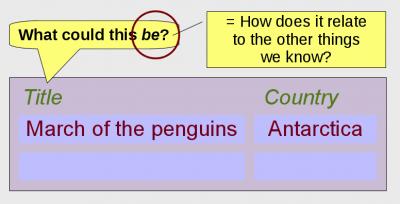
|
Asking what something is can easily lead us back to Adam and Eve (or to the beginning of the universe). And, indeed, modern information science does relate things back to universal categories. |
| • • • |
Clarifying the things to talk about
Metadata consists of statements about something. In this way, it is no different from ordinary discourse. Fruitful discourse requires a clear understanding of at least some basic concepts behind our words.
| • Previous: How fragmentation happens • Up: Contents • Next: Events in the lifecycle of an audiovisual creation • |
